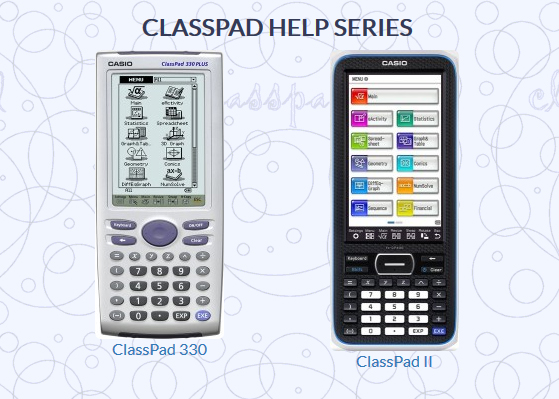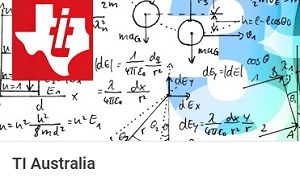

Year 12 Mathematical Methods Units 3 and 4
Overview
Mathematical Methods covers four broad areas – Functions and Graphs, Calculus, Algebra, Probability and Statistics.
Unit 3 begins with graphs of different functions, how to sketch them and find their equations. You will also explore how to transform the functions graphically and algebraically.
The different functions we study include: polynomials, hyperbolic and truncus functions, logarithmic, exponential and trigonometric functions (sine, cos and tan).
In Calculus we look at the rates of change in these functions. You will then use algebraic skills and graphs to analyse how rates of change affect each function.
Calculus then continues into Unit 4, where you study integration – how to find the area between a curve of a graphed function and the axis.
Many of the functions we study are applied to practical problems. For example, modelling tide movements, growth in population, or temperature fluctuations.
The final topic is Probability and Statistics. We describe the outcomes of chance, work out probabilities and analyse the outcomes of probability events. We also study random sampling as way to approximate confidence intervals for population proportions.
Algebra occurs throughout each topic and algebra is used to complete tasks in most weeks. Algebraic skills include, simplifying expressions, setting up equations, identifying key information, performing calculations and interpreting answers. Technology also plays a role. You will use your CAS calculator to check your answers, graph and interpret information, and to investigate mathematical problems
Who is it for?
Mathematical Methods is central to many areas of science and technology. It provides background in mathematics to understand the world around you and is often prerequisite for courses in science and technology. It provides a foundation for study in various fields, ranging from medical technology and engineering to economic predictions and statistical modelling.
While it is certainly helpful be good at mathematics, there is revision available to assist you to complete the subject. The key to success is to allocate regular study time and develop consistent study habits.
What do you do?
In graphing, you will explore the effects of transformations of a graph interactively. You will see how the equation of the graph changes when it is transformed.
In calculus, you explore the relationship between a graph and the way its gradient changes interactively. You will also develop algebraic skills to describe relationships and apply them in practical problems.
In probability and statistics, you investigate the relationship between probability experiments and probability distributions. You also explore random samples as a way to estimate a particular statistic in a population.
You will use your CAS calculator throughout to check answers and complete calculations
What skills do you need?
Mathematical Methods assumes some background skills, such as: knowing how to graph straight lines and parabolas, factorise quadratics and find trigonometry ratios (sine, cos and tan). Algebraic skills such as substituting values into algebraic expressions and solving equations are an important part of each topic.
While we provide revision of many of these skills, a general review of algebra, graphing, trigonometry and probability outcomes from Year 10 and Mathematical Methods Units 1 and 2 is recommended.
What skills do you develop?
Mathematical Methods develops several skills:
- being able to sketch graphs of functions
- applying graph sketching to solve problems
- developing skills in manipulating equations
- solving equations of various functions, including trigonometry functions
- interpreting answers to practical problems
- using a CAS calculator efficiently to solve problems, check graphs and equations.
Requirements
A VCAA approved CAS calculator:
For this study, you need access to VCAA-approved CAS technology. VSV course notes refer to the TI-Nspire CAS and Casio ClassPad calculators. The textbook also contains instructions for both TI-Nspire CX CAS and Casio ClassPad II calculators, with downloadable manuals for both Ti-Nspire and Casio Classpad. Although we recommend students have either of these CAS calculators, any of the listed VCAA-approved CAS technologies could be used. Further information on VCAA-approved technologies is available on their website.
You will need the following materials:
- ruler
- protractor
- exercise book for your workings
- graph book.
Things to think about
It is important to be clear about your reasons for wanting to study Mathematical Methods. Is it something you are interested in, a prerequisite for future study, or some other reason?
If you like maths, Mathematical Methods will be interesting and sometimes challenging. If Maths is not your favourite subject, you may need to make time to revise topics and to include extra practice.
Think about your commitments. Can you make the time available each week for study and skills practice?
One thing we recommend is contacting your teacher whenever you have questions. You can progress through your studies much more quickly by asking for help when you have a question.
Things you can do now
To help you make an informed decision, try the pre-test.
See what we recommend based on your pre-test. You can also speak to a VSV Mathematical Methods teacher to help with making the best choice for you.
Things to have a look at
ClassPad Help

The ClassPad Help site includes a series of videos on how to use the Casio ClassPad calculator.
Recommended Textbook: Cambridge, Mathematical Methods, VCE Units 3 and 4, second edition.

